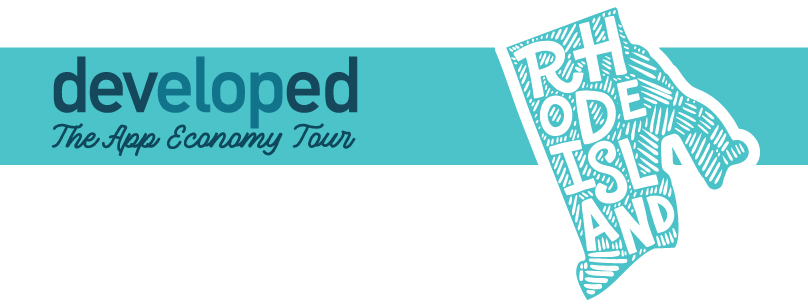On September 12, 2019, ACT | The App Association visited Tech Collective, a Providence, Rhode Island based tech community organization, to engage with developers about the local tech community, Rhode Island’s app economy, and general trends and opportunities for tech businesses. Through this event, we met Robert Blackburn of Blackburn Labs. Below, Robert discusses how the introduction of platforms opened up business opportunities for small companies, and how the relationship between small companies and platforms has evolved.
Have you ever been asked the question, “if you could live in any era what would it be”? It’s an interesting question. My answer used to be, the ‘70s. Sure, the ‘70s had a lot of great music, cultural revolutions, movies, and other seminal pop-culture, but that isn’t why I yearned to have lived in the ‘70s. You see, the ‘70s and early ‘80s is when some of the biggest commercial and private advancements in computer programming happened. Not only did we see some of the giants of the industry emerge like Steve Jobs, Bill Gates, and of course the Woz, but most computer software companies in the ‘70s—with the exception of Atari and the like—were small one or two person teams creating software in their garages, living rooms, and basements. Imagine the freedom of throwing a stack of floppy disks with your latest game or program into your briefcase, hopping into a car, and selling software store-to-store across the country.
For a software engineer this seems like the utopia of computer programming. The ability to personally create something great and watch it take hold across the country was a dream that certainly seemed out of reach when I was first entering a professional field in the ‘90s and 2000s. Born in 1979, by the time my professional career started I felt I had just missed the boat. The problem was that the cost of developing software was getting exponentially more expensive. For example, in the ‘70s/’80s one could create a video game for less than $50,000. According to Raph Koster, an award-winning game designer, as the size, complexity, and graphics of these games increased, so did the cost. As a result, by 1995 the cost of creating a video game was around $2 million. By 2005, $12 million. 2015, $120 million. As costs increased, smaller studios and independent developers simply could not compete. They didn’t have access to the huge budgets, marketing dollars, or distribution channels that the major players had. As a result, at the time I entered the software industry, the only way to be a part of some big, industry-changing software project was to join a AAA software company and be one person among hundreds or even thousands.
Yet, something miraculous took place in the mid-2000s that changed all of that: the birth of the distribution service platforms. It’s something that would trigger a renaissance in indie software engineering.
Whether you know it or not, these distribution service platforms are something you’re familiar with and have had a major impact on your life. If you’re using an iOS device or Mac, you’ll be familiar with Apple’s App Store, launched in 2008. If you’re more of an Android user, then you’ll be familiar with the Google Play store, also launched in 2008. If you’re a gamer you’re likely familiar with Steam, launched in 2003. Microsoft has the Windows Store; Amazon has their App store. Heck, if you have a newer TV, it likely has its own app store too.
According to App Annie’s January 2019 report mobile device consumers downloaded 194 billion apps in 2018 and spent $101 billion in app stores. This rise in app dominance looks to have no end in sight, since people 24 and younger spend 20% more time in apps than the rest of the population. As Gen Z continues to enter the job market, increasing their disposable income, I think we can expect these numbers to grow exponentially.
Of course, “Apps are a big deal” isn’t exactly news. However, what makes this such a game changer for entrepreneurs and independent development firms is the lowered barrier to entry in building these apps. Want to build an iOS app? Just download the free toolkits guides, and for just $99 annually for an Apple Developer account, you’re in business. Android? Another set of free tools and a $25 on-time fee is all that will cost you. Not a programmer yet? There are dozens of very affordable online courseware, or just head over to the entirely free OpenCourseWare by MIT. Not to mention the many great local initiatives designed to bring STEM training and job experience to Rhode Island, such as P-Tech and the Tech Collective.
What an exhilarating time to be an entrepreneur. We no longer need to drive cross country with a briefcase full of floppy disks. Distribution platforms do all that for us. Mobile apps-enabled devices alone have a global penetration of more than 28%, and over 90% in the United States. What does that mean? Your time and $124 is all it takes to tap into a distribution channel of over 2 billion customers. This would explain why there are now over 2.2 million apps in the Apple App Store and over 2.8 million in Google Play store. Not to mention the 30,000 games in Steam, almost 500,000 apps in the Amazon app store, and even my LG TV has over 200 apps. The question is no longer if your software can get to consumers, but simply which of the many powerful channels are best for your business.
Robert Blackburn is the chief technology officer at Blackburn Labs
